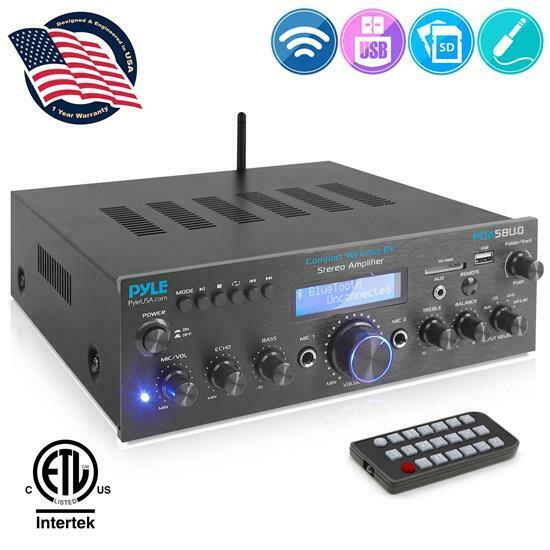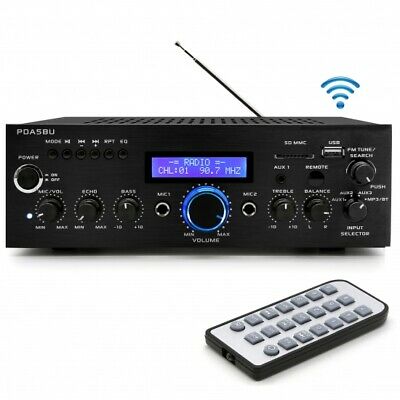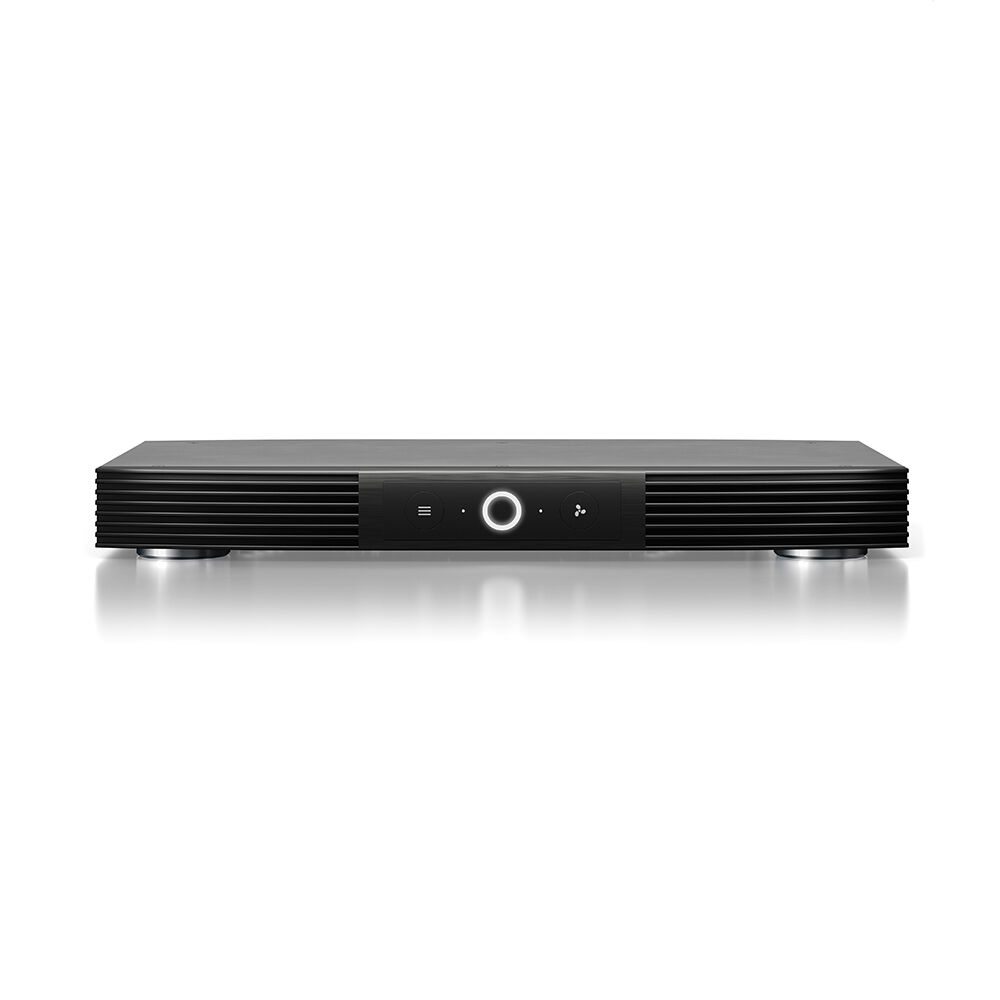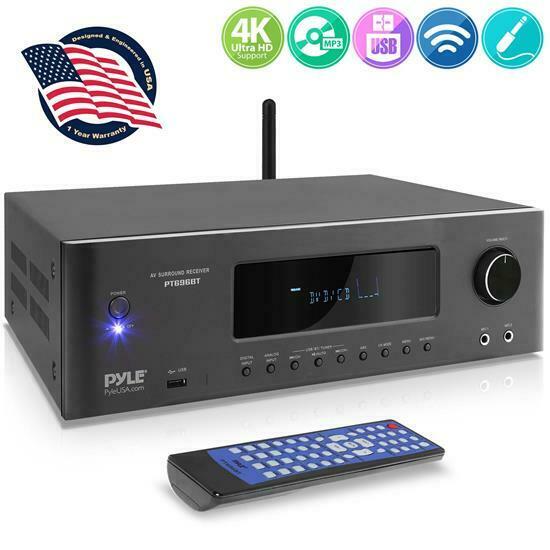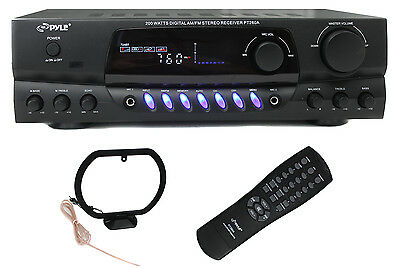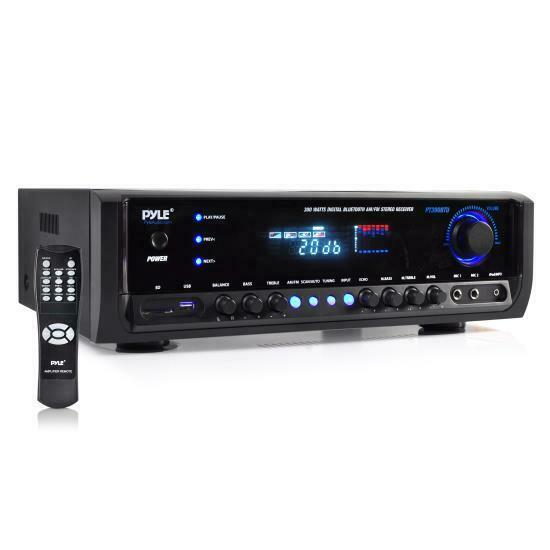-40%
Yamaha RX-V730 Natural Sound Home Theater 6.1 Chan. AV Receiver
$ 105.07
- Description
- Size Guide
Description
Yamaha RX-V730You can find
manual
instruction by clicking this link;
https://www.manualslib.com/products/Yamaha-Rx-V730-36771.html https://www.manualslib.com/products/Yamaha-Rx-V730-36771.htm
A strong selling point of the RX-V730 is the laundry list of decoding options included. Everything from Dolby Digital EX to Prologic II & DTS-ES compatibility is supported. The technology included in this receiver is pretty impressive. One of Yamaha's crowning glories is the Quad-Field Cinema Digital Surround Processor with 21 surround programs with a total of 41 sound environment variations. The DSP is a combination of Yamaha and Dolby technology that adds an additional channel for a rear center soundfield for 6.1 channel movie enjoyment. Preset sound fields for a variety of processing include music halls, movie theaters, sports arenas and gaming formats.
Adding to the abundant connections offered is a six channel input for DVD-Audio and SACD media plus input jacks for an external decoder. This adds the flexibility to attach future ground-breaking equipment to the receiver down the road. The RX-V730 also comes equipped with 40 station presets for tuning in AM/FM broadcasts. The presets can be programmed into five groups of eight stations – good for family use or separating music genre, but you might run out of local stations before you run out of presets.
The multi-way speaker binding posts found on higher end models are a nice inclusion. Unlike other receivers in this class that have spring loaded speaker connections, the binding posts allow for different possible connections including banana plugs, spade connectors and even heavy gauge cable.
The front panel is very basic with the necessary buttons well positioned. Advanced features can be accessed via the included RAV232 remote control. The remote is versatile with programmable functions for other manufacturer's components. A small orange backlit LCD display window is placed near the top third of the remote to show source components selected rather smartly. The name of each source can be changed to reflect your exact system setup for a custom touch.
Installation/Setup/Ease of Use
The RX-V730 comes with a nice compliment of assorted inputs and outputs. A casual electronics buff could easily marry this receiver into a home theater with little or no problem. It took fewer than 15 minutes to run cables to and from my HDTV monitor, DVD player, CD changer and 5.1 surround sound speakers. Proceeding to the onscreen display, I was able to view the operational information of the Yamaha on my television instead of peering into the small front panel display. With six speaker mode settings, I chose the appropriate size of speaker I was using (large, small or none) for each channel. Selecting the appropriate size speaker is important, because the RX-V730 will automatically change crossover points according to speaker size. Continuing the speaker setup, I moved on to adjusting speaker output levels and delays. Using a test tone delivered for accurate Dolby Digital surround sound, I adjusted each speaker output level while seated in my listening position.
True to mass marketed receivers, the RX-V730 had minimal adjustments for time delay for the rear speakers and poor documentation in the manual. Only the center and rear left and right speakers allow for time delay adjustments which should work fine for the average home. The idea behind adjusting time delay is to have sound from every speaker reach your ears at the same time in relation to the signal being sent. Therefore it is important to adjust the delay to rear speakers that are typically closer to your ears than the center and front speakers.
Final Take - With a very affordable price, the Yamaha RX-V730 is perfect for a casual user or first-time buyer. But the form and function of this receiver will appeal to a much larger group of audiophiles. Thousands less than flagship receivers, the RX-V730 is a quality piece of hardware with solid performance over a wide range of material.
To keep the price down to a sensible level, Yamaha integrated a modest power output of 75 watts per channel. For a reasonably sized room, it should perform admirably. Driving speakers to fill a large area may prove too much and drive the amp to clip. I pushed the RX-V730 pretty hard without any detrimental effects in my 20' x 14' living room. The soundstage was very open and accurate during movie playback with lots of appeal. Pushing my speakers at high volume for long
periods, the receiver held its own. I really enjoyed the level of separation in surround modes, especially at high volume.
For music, the sound was somewhat bright and almost harsh at times. This may be due in part to my system configuration, but I would have liked a softer tone overall. The two-channel performance could have had a bit more punch, but for a receiver in this range with moderate power, I couldn't have asked for more. The included bass management compensates for this somewhat by redirecting the low frequencies to a dedicated subwoofer output.
Running video signals through the Yamaha via component cables yielded reasonable picture quality. I didn't detect any real loss of signal through the video switcher in comparison to cabling run straight to my HDTV monitor.
Again, the RX-V730 is mid-pack in the 8 receiver line that Yamaha sells, so it has limitations that are addressed in the four models above it. However, the reliability and return on investment demonstrated to me during the test were amazing. Beyond any flashy faceplate, pretty knobs or inflated specs, the usefulness of a receiver is ultimately proven by accurate delivery of sound. The RX-V730 does a fine job for its class and would be a welcome addition to any budding home theater or system in need of a tune-up.
Yamaha RX-V730 A/V Receiver
6 x 75 watts at 8 ohms
Dolby Digital Matrix 6.1, Dolby Digital 5.1,
Prologic II, DTS-ES & DTS processing
Bass Management
Multi-channel 5.1 output
21 DSP programs/41 variations
5 S-Video & 5 component AN inputs
2 S-Video & 2 component AN outputs
2 component video inputs,
1 component video output
Front composite, S-video and digital audio inputs
4 optical, 1 coaxial digital input
1 digital output
6 analog RCA inputs
17 1/8" wide x 6 7/16" tall x 15 3/8" deep
_________________________




